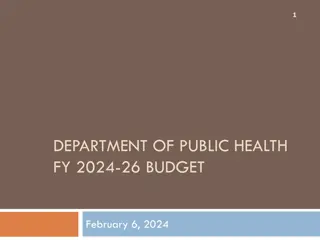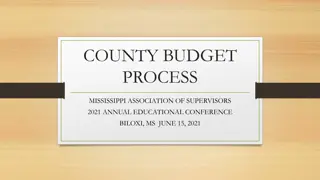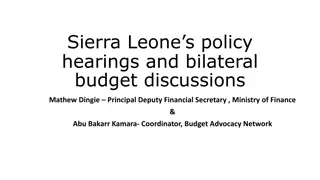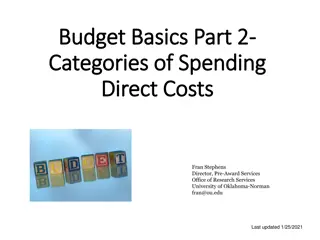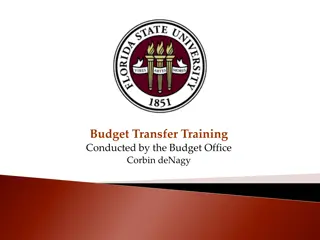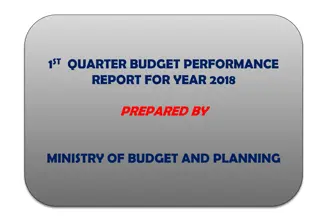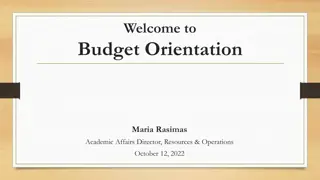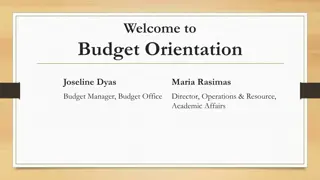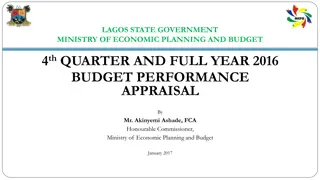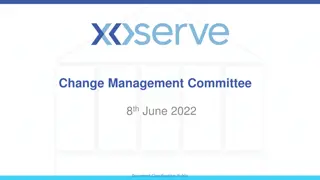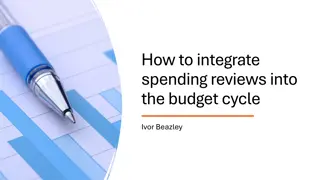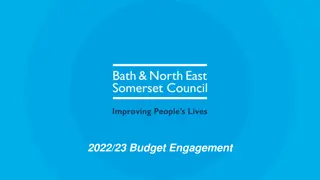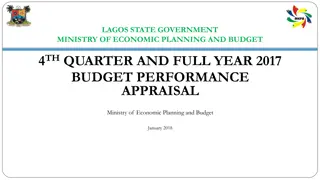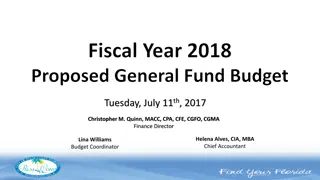Effective Budget Planning for Research Proposals
Understanding the different types of budgets (modular vs. itemized), navigating costs limitations (direct vs. indirect), and adhering to budgetary restrictions are crucial aspects when preparing a research proposal budget. The funding solicitation guidelines, including RFAs, RFPs, PAs, and FOAs, will provide valuable information on creating an effective budget for your research project.
Download Presentation

Please find below an Image/Link to download the presentation.
The content on the website is provided AS IS for your information and personal use only. It may not be sold, licensed, or shared on other websites without obtaining consent from the author.If you encounter any issues during the download, it is possible that the publisher has removed the file from their server.
You are allowed to download the files provided on this website for personal or commercial use, subject to the condition that they are used lawfully. All files are the property of their respective owners.
The content on the website is provided AS IS for your information and personal use only. It may not be sold, licensed, or shared on other websites without obtaining consent from the author.
E N D
Presentation Transcript
Preparing your Research Preparing your Research Proposal Budget & Budget Proposal Budget & Budget Justification Justification November 8, 2016 Research Brown Bag Presentation Kyle Bryan & Muriel Industrious
Where do I begin? Where do I begin? The Funding Solicitation RFAs: Research Funding Announcements RFPs: Request for Proposals PAs: Program Announcements FOAs: Funding Opportunity Announcements The solicitation will provide the proposal guidelines Type of budget to use (there may be an agency specific template) Costs limitations (direct vs. indirect) Budgetary restrictions
Types of Budgets Types of Budgets Modular vs. Itemized/Detailed Modular: simplified, requests are in lump sums of $25,000 modules Itemized: line-item detail is provided for each year of the project
Costs Limitations Costs Limitations Direct costs: are costs that can be identified specifically with a particular sponsored project, an instructional or institutional activity, or one that can be directly assigned to such activities relatively easily with a high degree of accuracy. These costs include expenditures for project personnel salaries and employee benefits, supplies, travel, equipment, telephones, and postage. All direct cost items must be included in the budget. Indirect costs: are incurred by a grantee that cannot be identified specifically with a particular project or program. They include the costs of many services the college provides (procurement, administrative, library, OSP, Technology Transfer Office (TTO), custodial, accounting/finance, and security) as well as building maintenance and depreciation, and utilities. These costs are often referred to as the cost of doing business , business overhead, or Facilities and Administrative Costs (F&A).
Budgetary Restrictions Budgetary Restrictions The funding solicitation will provide information on what costs are can be included in the budget. The basic considerations for determining the allowability of costs are that they be ALLOWABLE, ALLOCABLE, and REASONABLE: Allowable refers to costs that may be charged to a grant or contract. Allocable refers to costs that are necessary for the success of the project. Reasonable refers to actions a prudent business person would employ.
Examples Examples Allowable costs: Personnel salary and fringe benefits (senior/key personnel, other personnel) Definition of Key Personnel: Key personnel are defined as all individuals who contribute in a substantive way to the scientific development or execution of the project, whether or not salaries are requested. Typically, these individuals have doctoral or other professional degrees, although individuals at the masters or baccalaureate level should be included if their involvement meets the definition of key personnel.
Examples of Allowable Costs (cont.) Examples of Allowable Costs (cont.) Equipment: (capital equipment considered greater than $5,000) Research Recruitment: gift cards Travel: professional meeting/conference, mileage Consultants Translation/Transcription IT: iPad, laptops, software Subcontract/Consortium Tuition Meetings
Examples of Unallowable Costs Examples of Unallowable Costs First class and international travel Alcohol Entertainment Advertising not directly related to research Construction Moving expenses Office furniture Personal memberships
Purpose and Importance of a Budget Purpose and Importance of a Budget Key element of most grant proposals Serves as a blueprint for spending the project s funds Accurate assessment of all costs that are deemed necessary and reasonable Helps reviewers determine how the project will be conducted Budget details usually reveal whether a proposed project has been carefully planned and may ultimately be feasible. Integral part of the obligation to the sponsor Particularly regarding time/effort commitments
How is the budget used by How is the budget used by Reviewers and Program Officials? Reviewers and Program Officials? The budget reveals the applicant s understanding of what it takes to accomplish the proposed research However, the budget is not used to assess scientific merit and is reviewed after the scientific merit is assessed RULE 1: Develop a Realistic Budget! RULE 2: Justify Needs! 13
Writing a Budget Justification Writing a Budget Justification Most sponsors require you to submit a budget justification, also called a budget narrative Allows you to explain the need for each line item in the budget Shows the breakdown of calculations used to arrive at amounts included in the budget
Helpful Tips Helpful Tips When constructing a budget justification, follow the same order as that in the itemized budget or sponsor's budget form, so reviewers can easily compare the two documents. Check to see if the sponsor limits the page length for the justification. Be sure everything in your budget and budget justification is referenced in the proposal description/narrative as well and be sure everything mentioned in your proposal description that would incur cost is explained in the budget and budget justification!
Budget Life Cycle Budget Life Cycle





